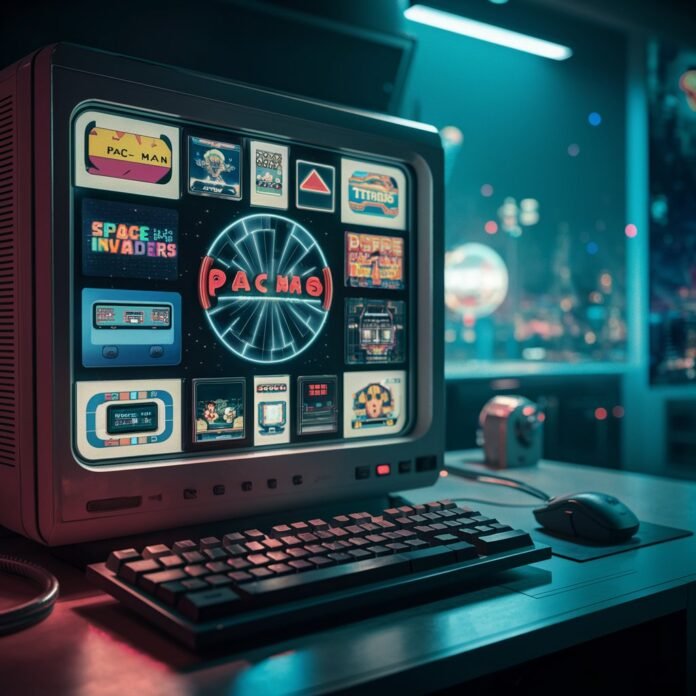Introduction
At TheGameArchives.com techview preserving gaming history isn’t just about collecting old cartridges and discs—it’s about leveraging cutting-edge technology to ensure these digital artifacts remain accessible for generations to come. Our TechView series dives deep into the tools, techniques, and innovations that power our mission, from advanced emulation and data recovery to artificial intelligence and blockchain verification. Whether you’re a developer, a historian, or simply a curious tech enthusiast, this behind-the-scenes look reveals how we tackle the unique challenges of game preservation in the digital age.
1. The Challenge of Digital Decay
Video games are among the most fragile forms of media, susceptible to bit rot, hardware degradation, and format obsolescence. Unlike books or films, games often rely on proprietary hardware and software ecosystems that vanish when companies abandon them. For example, early PlayStation 2 titles stored on DVDs can suffer from disc rot, while digital-only games risk being lost forever when storefronts shut down (as seen with the Wii Shop Channel). At TheGameArchives.com, we combat these threats through multi-layered preservation strategies, including ROM dumping, hardware emulation, and cloud-based redundancy. This section explores why traditional archiving methods fail for interactive media and how we adapt to save what others might consider lost causes.
2. Emulation: The Heart of Game Preservation
Emulation allows us to recreate vintage gaming systems in software, but achieving accuracy—not just functionality—is critical. Our TechView reveals how we:
-
Reverse-Engineer Hardware: Using tools like MAME (Multiple Arcade Machine Emulator) and custom FPGA solutions to mimic original chipsets cycle-for-cycle.
-
Preserve Authentic Experiences: Simulating CRT scanlines, original controller latency, and even region-specific quirks (e.g., PAL vs. NTSC speeds).
-
Solve Legal Gray Areas: Partnering with developers to distribute abandoned games legally, as seen with our “Homebrew License Initiative” for indie creators.
We also spotlight controversies, such as Nintendo’s stance on emulation, and how we navigate them ethically.
3. Data Recovery and Reconstruction
Many games arrive in our archive as corrupted files, partial prototypes, or physical media on the brink of failure. Our tech team employs:
-
Forensic Tools: Like ddrescue to salvage data from deteriorating floppy disks or cartridges.
-
AI-Assisted Restoration: Training neural networks to upscale low-res textures or reconstruct missing audio tracks (e.g., a recovered Silent Hill 2 beta soundtrack).
-
Community Sourcing: Crowdsourcing missing code snippets or levels from fan-held copies, as we did with the Sonic Crackers prototype.
Case studies highlight triumphs, such as recovering a lost 1995 JRPG from a single surviving devkit.
4. Blockchain and Provenance Tracking
To combat piracy myths and verify authenticity, we’ve pioneered NFT-based certification (non-fungible tokens) for rare builds. Each archived game receives:
-
A Digital Fingerprint: Storing checksums and metadata on the blockchain to prove legitimacy without restricting access.
-
Developer Attribution: Linking unreleased prototypes to their original creators via smart contracts (e.g., a Metroid Prime beta now credits its lead designer).
-
Donor Transparency: Public ledgers show where physical donations originated, discouraging black-market trafficking.
This section clarifies how blockchain aids preservation—without the crypto hype.
5. The Future: AI, VR, and Beyond
Our TechView roadmap includes:
-
AI-Powered Emulation: Using machine learning to predict and fix emulation errors in real-time.
-
Virtual Reality Archives: Exploring Meta Horizon Worlds or UE5 recreations of classic arcades for immersive history lessons.
-
Automated Preservation Bots: Crawling defunct websites and P2P networks to rescue at-risk indie games automatically.
We also discuss the risks of AI overreach, like altering original artistic intent during restoration.
6. How You Can Contribute
TechView isn’t just for passive reading—readers can:
-
Donate Hardware: Old devkits, debug units, or test cartridges help us improve emulation accuracy.
-
Join Beta Tests: Try our Community Emulator Builds and report bugs.
-
Code for Preservation: Open-source projects like our DOSBox-X fork welcome developer input.
Conclusion
TheGameArchives.com’s TechView demystifies the tech saving gaming history—one byte at a time. From battling disc rot to certifying classics on the blockchain, we’re proving that preservation is as innovative as the games themselves. Curious to see it in action? Explore our TechView hub or join our next developer livestream.



